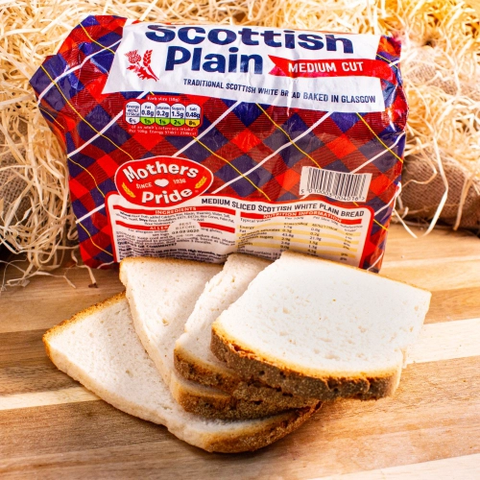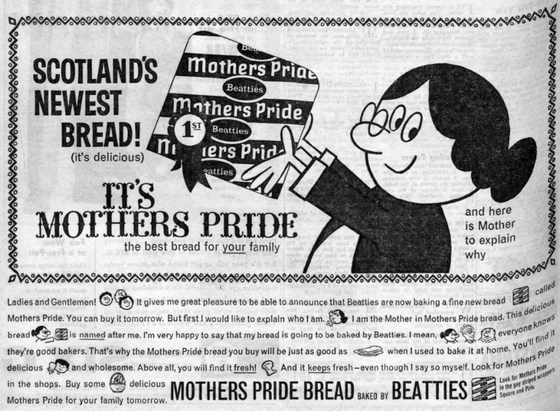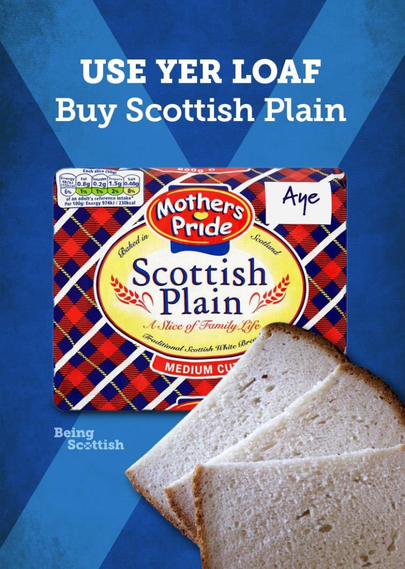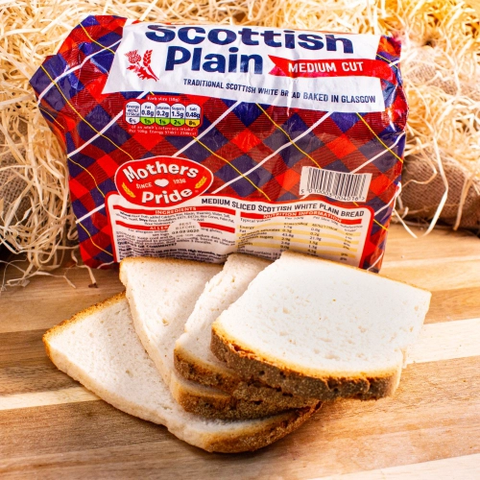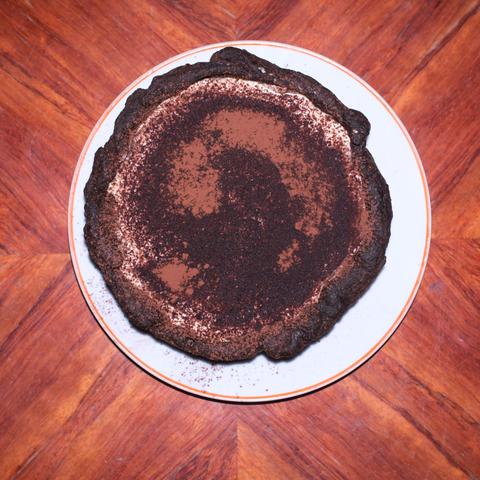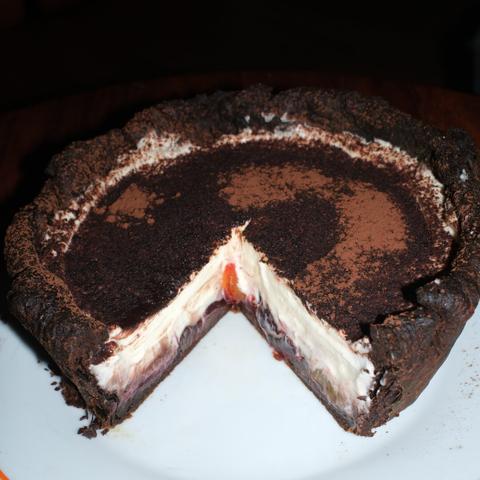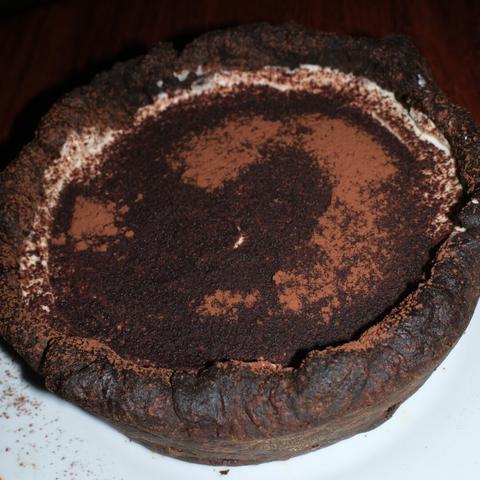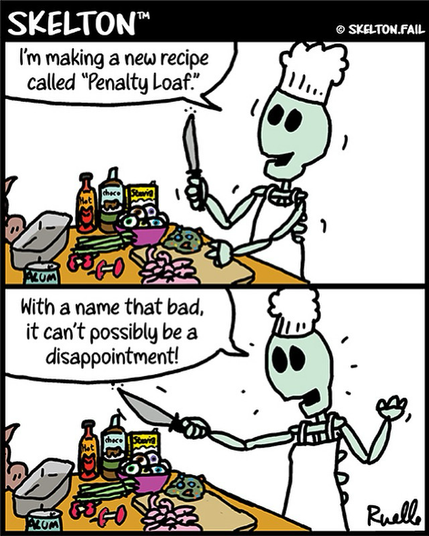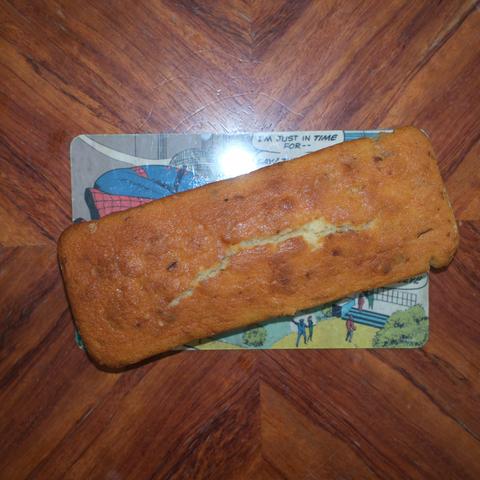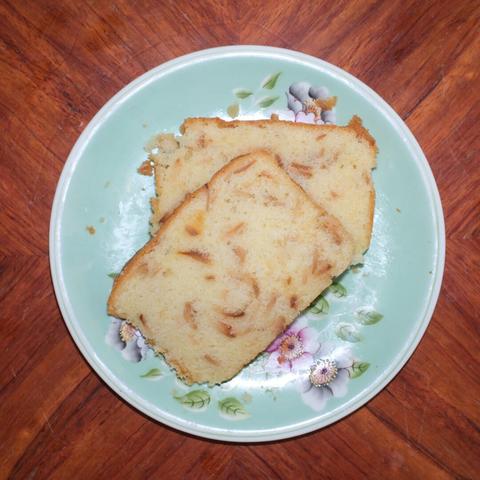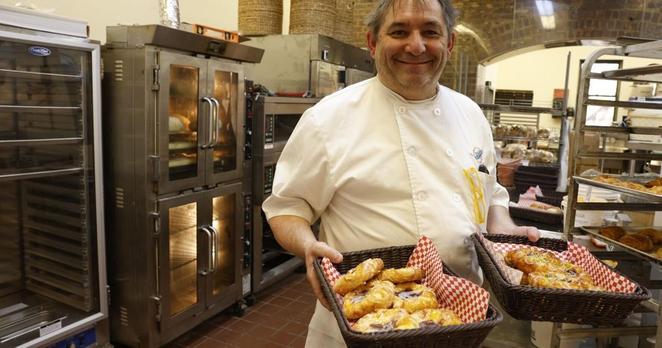News Podcast: Baker & Taylor to Close, Spotify Links with ChatGPT, Reedsy Launches New No-AI Writing Challenge https://selfpublishingadvice.org/podcast-baker-taylor-to-close/ #SpotifyChatGPTintegration #no-AIwritingchallenge #Baker&Taylorclosure #ReedsyNovelSprint #bookdistribution #AIandcreators #Podcast
#baker
News Summary: Baker & Taylor Closure Reshapes Library Supply; Frankfurt Fair Opens Ahead of SelfPubCon 25 https://selfpublishingadvice.org/baker-taylor-closure/ #Amazonlibraryservices #FrankfurtBookFair2025 #Baker&Taylorclosure #librarydistribution #indieauthornews #SelfPubCon25 #News
Tez Johnson has already proven to be a steal from the 2025 NFL Draft
For a player like Tez Johnson to be labeled as a draft steal, it may seem premature, especially…
#nfl #nfldraft #NFLDraft #American #AmericanFootball #Baker #BakerMayfield #Bay #Buccaneers #Football #Hub #Mayfield #National #NationalSports #news #NFL #NFLHub #Overall #OverallPositive #Positive #Sports #SportsNews #Tampa #TampaBayBuccaneers
https://www.rawchili.com/nfl/447730/
Parole Board apology: Texting truckie Sarah Schmidt, who killed Caleb Baker, released before eligible date
Schmidt later pleaded guilty to two charges of dangerous driving – one each of causing death and injury.…
#NewsBeep #News #Headlines #Apology #baker #before #board #caleb #date #eligible #killed #NewZealand #NZ #parole #released #sarah #schmidt #texting #truckie #who
https://www.newsbeep.com/186202/
News Summary: Nobel Prize for Literature Announced; Baker & Taylor to Close After Two Centuries https://selfpublishingadvice.org/nobel-prize-for-literature/ #NobelPrizeforLiterature #publishingindustrynews #Baker&Taylorclosure #bookdistribution #globalbookmarket #SelfPubCon2025 #News
#TheGreatBritishBakingShow #Baker Leaves Tent Mid-Episode: “Does No One Wanna #Play?”
Wer Lust hat am Mo, den 29. September 2025 um 18 Uhr mit auf eine kleine Tour zur Künstlerboheme der 1920er Jahre im Neuen Westen von #Berlin zu gehen: Wir treffen uns an der Uhr in der Eingangshalle der U-Bahn #Wittenbergplatz. Mit dabei sind John Höxter, Bert #Brecht und Trude #Hesterberg, der 'Rote Richard' und die Gebrüder #Saß, Marlene #Dietrich und Josefine #Baker, Josef #Roth, Erich #Kästner und viele andere auch.#Geschichte #Stadtführung
The thread about Plain Breid; history, politics and an enduring place in the Scottish national psyche
The curious history and politics of Plain Breid. A thread.
First things first. Mothers Pride, despite the tartan packaging, was not originally a Scottish brand – it hails from England! It dates to 1932 when it was introduced by W. J. Brookes & Sons of Manchester, an industrially-produced loaf (one altogether different from what we are familiar with in Scotland) wrapped up in its distinctive waxed-paper packaging to keep it fresh. When the baking industry consolidated from the 1950s onwards, big companies took over regional bakers and applied their brands to them, for example Allied Bakers’ Sunblest and United Bakeries’ Wonderloaf. The Mothers Pride brand would not be introduced to Scotland until 1960, when it was launched by Beatties Bakeries of Kirkcaldy as a franchisee of the vast Joseph Rank milling and baking empire.
Mother’s Pride launch advertisement, Sunday Post, April 17th 1960Second things second. Plain Bread was not originally a peculiarly Scottish term; but it is one that has become over time almost universally associated with a specific style of Scottish batch-baked bread, with its closest relations in styles of Irish bread. So what is plain bread and how did it become to be the loaf with such a strong national identity that it is known for today? And why?
Plain Breid is firmly entrenched in the Scottish bantersphereThe term plain bread derives from the Bread Acts in the early part of the 19th century, starting in 1822. Governments have long sought to regulate pricing and quality of bread, going right back to medieval times, in recognition of it being so essential a foodstuff to life. Breads were classified, at the highest levels, as being of two types:
- Plain Breads, which were the common, standard breads and to be sold in regulated sizes and/or at regulated prices and;
- Fancy Breads, where the baker was exempt from price and weight control and free to produce the breads he pleased at the sizes and prices he chose
So you got plain bread in England as well as in Scotland, but the actual breads themselves that were sold as plain were not the same and there was a distinctly Scottish bread that came to dominate the plain scene in Scotland. There were two principal reasons for this. Firstly, Scottish wheat is by and large not that suitable for bread so in Scotland, oven-baked bread (not girdle/griddle breads) had long made more use of imported European wheat offering higher-gluten flours. Secondly, Scottish bakers had a different baking practice for historical reasons. They used a very long-fermentation process (14-16, or more, hours) meaning that nobody had to come in overnight to work the dough. This also meant that they could avoid working on the Sabbath; Monday morning’s bread started out on Saturday evening and was then left to its own devices on the Lord’s day, being ready for baking first thing on Monday morning. These very different bread doughs needed a different baking process to England and as a result the end product was also very different. But from a definition point of view, it was all still plain bread.
Mothers Pride Scottish Plain loafAs the 19th century progressed, the traditional methods in Scotland persisted – but were industrialised. Scottish bakers developed a batch-baking technique whereby loafs of high-gluten, imported wheat were baked together in a large iron box. These loaves were leavened not with bakers’ yeast but with the traditional barm (a yeasty, liquid by-product of the brewing industry) and had the traditional long fermenting time. As the individual loaves rose and baked, they stuck to each other in the box, and needed to be pulled apart after baking.
Interior of the Malow & Lien bakery in Glasgow, 1917. The plain bread batch baking tray is in the foreground. © Mitchell Library C770This distinctly Scottish version plain bread therefore has an appreciable crust on the top and bottom, but not on the sides and ends of all the inner loaves, where they are protected from the direct heat of the oven by their neighbours. As such only the ender loaves, whose sides touched the hot edge of the baking box, have a side or end crust too (and then, only on one side and/or end). In the picture below we can see the white, crust-less sides of the loaves from a split batch, with the enders in the right background having a crust to the side and end.
Plain loaves cooling at Stag’s bakers in Stornoway, the batch has been torn into quarters to cool, before pulling off the individual loaves. Picture © We Love StornowayThe end product of this industrialised approach to baking was a cheap, soft and palatable bread, one which was true to the roots of the Scottish baking tradition. But with its lack of all-round crusts, it was susceptible to drying out quickly and it also produces a more irregular shaped and sized loaf, with the enders being less desirable and therefore usually being sold at a discount.
Trade Union banner of the Cooperative Bakers & Confectioners of Scotland National Federal Union, showing two bakers infront of an industrial bread oven, with a batch of plain loaves that is about to be cut with a huge knife. From 1912 © Edinburgh City LibrariesSo that is what Scottish plain bread is and why it was different from English plain bread (which could be any one of a variety of regional, mass-produced breads, produced their own techniques and ingredients). This sort of bread unsurprisingly came to dominate the Scottish market as it was easy to produce in volume and it was affordable. It came to account for 75% of all bread produced in Scotland and in Glasgow as much as 90%. It was produced both by small, independent bakers, the Co-operatives and the big bread factories like Macfarlane Lang’s Milanda or Bilslands.
https://www.flickr.com/photos/billielolasorcha/3802306180
In the late 19th century, this bread was mainly known in Scotland as the plain loaf or the batch loaf. In England it was referred to as the Scottish square and it was as a result of this nationally distinctive naming convention that politics starts to creep into our story. Back to those Bread Acts: to protect the public from being short changed by the baker, plain loaves could only be sold in avoirdupois units (pounds) and only in 2 or 4 lbs weights – the so-called half-quartern and quartern loaves (a quartern loaf being a loaf made with a quartern volume of flour, which equated to a baked weight of about 4lbs) . Furthermore they had to, by law and on pain of some pretty hefty fines, be stamped or embossed with their weight. The Scottish batch baking system meant that the weight could not be embossed on the baking box, as most of the loaves didn’t touch its sides, and so they would have to be marked up individually, afterwards. This brings us to the other category of bread, fancy bread. Fancy bread simply meant all bread that wasn’t plain bread. For many years, it was the Jenny Lind (centre in the picture below) that was popular in Scotland – probably a reference to the hairstyle of the famous Swedish nightingale.But you could also get French, Viennese and Belgian breads amongst others. But all of these were really just names for shapes, to make the bread sound exotic and to sell it at a higher price, as nearly all Scottish bakers used exactly the same dough for all their fancy breads! So no matter what they called it you basically had the same bread but a different shape.
Scottish fancy breads, a colour plate from “The modern baker, confectioner and caterer” by John Kirkland, 1907. 1 = French Staff or Long Vienna, 2 = Belgian Roll, 3 = Baton, 4 = Jenny Lind, 5 = Scotch Pan, 6 = Coburg, 7 = Fancy Milk, 8 = Fancy RumpyMost bakers would make and their standard batch plain bread and just one or two styles of Fancy breads. The latter types legally did not have to be sold in set weights with these marked on them. But the custom in Scotland was that the plain and fancy loaves were all actually sold at the same price but the baker would vary the weight of the latter to sell them at a higher price per unit weight. So for instance you would buy your 2d plain loaf for and it weighted its legal 2lb or you could buy a 2d fancy loaf but that might weigh maybe only 1¾ lb. This was in contrast to in England where the practice was to have the same weights the same between plain and fancy breads and varied the price instead. But the real difference in England was that the predominant style of industrialised plain bread was the pan loaf. These are loaves baked in individual baking pans, such as the classic Hovis pan, which could easily be embossed with the loaf weights.
Hovis bread pansBut in Scotland, people considered such pan loaves to be a fancy loaf, as they were more expensive to produce using Scottish practices than the plain batch loaves. And this is where Scottish bakers began finging themselves falling foul of the bread laws. You see the in 1892, the Burgh Police (Scotland) Act consolidated many existing municipal laws into one, including those on weights and measures concerning bread by which the Bread Acts had been enforced in practice.
Excerpt from the Burgh Police (Scotland) Act, 1892Notice that the relevant section (427) did not actually determine in any way what constituted plain or fancy breads, it just differentiated between the two (more on that shortly). Because in Scotland you got less bread for your money with a pan loaf, people considered it to be a premium product – fancy bread (whereas confusingly in England it was the pan loaf that was the staple plain bread). As such, buying pan loaves became associated in Scotland with having a little bit more (or too much) to spend, with acting above your station. The phrase pan loaf-voiced was therefore used to describe someone who was well spoken in that a sort of Scottish version of Received Pronunciation that is expertly roasted in this classic ScotRail TV advert.
https://www.youtube.com/embed/5eBC1-YD9Wo
Anyway, back to the all important Burgh Police Scotland (Act) 1892. This placed the powers of weights and measures in the hands of the Burgh authorities and they set about enforcing it with some enthusiasm. The city Corporations of Glasgow and Edinburgh in particular were determined to make sure that the paying public was not being undersold by their baker and that the regulated plain loaves were being sold in the correct 2lb or 4lb sizes only. This was actually quite a difficult feat for bakers as the entire batch process by its very nature resulted in loaves of inconsistent size and shape. The Corporations’ inspectors found that the nominally 2lb plain loaf was varying in size from anywhere between 1lb 6oz to 2lb and so it was decided to make examples of those found to be flouting the regulations, in order to improve consumer confidence at a time of numerous food scandals. In particular they began to crack down on the sale of pan loaves without the legally required weight stamp on them – the Scottish inspectors took a very English approach to this and considered pan loaves to be plain bread, as they were in England.
In 1898, the Northern Baking Co. of Tradeston in Glasgow was taken to court for selling 50 rumpy loaves (number 8 in the previous picture of Scottish fancy breads) – which were considered a standard plain bread in England – without the weight stamp. The baker contended that these were fancy bread and didn’t need to be either stamped or exactly 2lb. Things came to a head in November of that year, when Peter Dick of Montgomery Street and Union Place in Edinburgh was prosecuted for selling 12 pan loafs without the weight stamped on them. Superintendent Moyes of the City Weights & Measures department contended that pan loaves were plain bread, as they were considered as such in England, and that by the bakers own admission they used exactly the same bread mixture as his plain batch loaves, therefore surely were also plain bread? In his defence, Dick contended that it was well known in Scotland that pan loaves were fancy bread and always had been. As his customers knew this they therefore did not need to weigh 2lbs and did not need a weight stamp (regardless of what dough they were made from). The defence called witnesses from the Master Bakers Incorporations of Partick, Dundee, Edinburgh and other towns, who all corroborated that in Scotland a pan loaf was a fancy bread and always had been. Sheriff Maconochie, presiding, determined that because the Burgh Police (Scotland) Act gave “no indication at all of what fancy bread was” that the only grounds he could therefore decide on was what was “ordinarily sold to and spoken by of the public“. Maconochie came down on the side of the bakers and therefore on 14th November 1898, the legal precedent was set in Scotland that a pan loaf counted as fancy bread and therefore by extension, the only bread that could legally be considered plain bread was the plain batch loaf.
Not just any Scottish Plain Loaf, this is an M&S Scottish Plain LoafBecause pan loaves were now legally fancy loaves in Scotland, they were therefore exempt from having to be sold in only 2lb or 4lb weights and did not require to be stamped as such. Scottish bakers were free to continue to sell them at the same price as their plain loaves and reduce their size accordingly, as they always had done. This had the knock-on effect of making Scottish pan loaves smaller than their English counterparts, where they were plain bread and thus legally had to be 2lb. It is this distinction that is referred to in the lyrics of the legendary Jeely Piece song, when sung in the Glasgow accent the “one” becomes “wan” to rhyme with “pan”;
If it’s butter, cheese or jeely, if the breid is plain or pan,
The odds against it reaching earth are ninety-nine tae wanThe Jeely Piece Song, by Adam McNaughton
Now that this had all been set out in law the populace of Scotland got back to their lives and back to consuming large quantities of the substance as the basis of their diet. Prices varied by burgh, being determined by the local trade incorporations of Master Bakers, with small variations to accommodate for competition or local factors like transport and fuel costs.
So long as Scotland could continue to get a good, affordable supply of the higher-quality foreign wheats needed for milling high-gluten bread flour for the plain loaves there wasn’t going to be a problem. This flour had traditionally come from Europe, but increasingly it came from as far as Canada and America due to the advances in transatlantic shipping. This was all no problem in times of peace, but then something came along that interrupted that vital flour supply – the world went to war in 1914. By early 1917, the U-boat war in the North Atlantic was biting hard and the supply of food to the UK from the breadbaskets of Canada and America was perilously threatened. In May 1917, the Minister for Food warned the cabinet that by September, it would be a “difficult problem” to feed the nation. The Government had to act.
WW1 bread saving campaign poster; much British bread flour was imported and this tied up the Navy in needing to undertake convoy escort work, when it could be off fighting the enemy. Art.IWM PST 4470Firstly, all loaves, whether they be plain, pan or fancy, were standardised as either 2lb or 4lb, in England and Scotland. Secondly, the sale of fresh bread was banned; all bread had to be aged at least 12 hours before sale. This was to ensure all bread was beginning to go stale at point of sale to prevent people refusing to buy stale bread today versus fresh bread tomorrow. This cut down on the waste of discarded loaves and stale bread was felt to be more healthy, and easier to slice thinner so you could get more slices out of a loaf. More importantly this change meant that overnight baking could be stopped, saving the fuel of lighting the industrial bakeries at night time. But most importantly, it was simply less palatable and so people just ate less of it. It was found this alone reduced bread consumption by 5%, saving on wheat imports. Thirdly, commercial bakers were obliged to use a standardised flour to produce a regulation bread. Standard flour had the extraction rate raised from the 70% of white flour (meaning 30% of the grain is not milled, discarded as bran and husk) to 81% – 100% extraction being wholemeal. The regulation flour was also compulsorily adulterated with the flours of non-wheat grains. Maize, potato, barley, oat etc. Legally at least 10% had to be non-wheat flour, and millers at their own discretion could add the adulterants up to 25%.
Not surprisingly, this all caused problems in Scotland. Scottish bakers had to use 2lb or 4lb English pans for pan loaves, rather than the favoured 1lb 12oz pans. This resulted in bigger loaves than was the custom and as they could no longer sell these for the same price as their plain loaves, consumption of fancy pan bread fell 33%. A far bigger problem was with the flour, the Scottish baking process needed that high-gluten, white flour just did not work properly with the high-extraction, adulterated standardised flour. Millers compounded the problem as they did not even have to specify the level or type of adulteration in their flour and so each sack could be different – bakers found themselves having to constantly experiment with each new batch of flour and alter their process to suit the blend – which inevitably changed in the next order. They begged the government to mandate millers specify the flour contents, the problem becoming so severe in 1917 that it was genuinely a cause for concern that the Scottish plain loaf would have to be abolished and people would have to start eating English-style pan bread!
Contemporary Scotsman editorial on the subject of the plain loafA further problem was much poorer farm and flour mill hygiene and quality control in wartime. With the more intensive milling to get the required higher levels of extraction from the wheat grain, flour was more at risk of rope. Rope, or Bacillus subtilis, is a bacteria whose spores live in the soil and can infect wheat. Rope spores can survive baking temperatures and the moist, warm interior of freshly baked bread is perfect for them to reproduce, feasting off the contents of the loaf. Bread infected with rope has a distinct taste, variously described as like silage or pineapple or vomit (think of the sort of flavours ascribed to Parmesan cheese). Rope bread was barely edible and bad bread was said to be “a bit ropey“; the origin of the English language idiom for something of dubious quality.
Rope spores under the microscope. CC-BY-SA Y tambeWith the WW1 Bread Acts the Government didn’t just meddle with bread production to reduce consumption, it also subsidised bread to stop price inflation by guaranteeing bakers a fixed price per sack of flour and paying the millers the difference. The price of plain bread (be it English or Scottish or Welsh or Irish style) was set at 9d per quartern (4lb) loaf. So even if the bread was rubbish, and you were encouraged to eat less of it, you could still at least afford to buy it.
The Kitchen is the Key to Victory. Bread control was a wartime weapon. Art.IWM PST 6541For fancy bread, the bakers could charge cost plus profit, so although in England the price of pan bread was fixed and subsidised at 9d, in Scotland it was classed as fancy bread so even with the loaf size reduced to 1.75lb it became unaffordable for many.
The wartime bread regulations, caused a big shift in consumer habits in Scotland – away from pan and other fancy breads, to the cheaper plain loafs. At the same time, the quality, economy and palatability of those plain loaves decreased dramatically, people were eating more, poorer quality bread. As a result of all this, again the legal question over what constituted fancy bread in Scotland raised its head. The authorities in Dunblane tried to prosecute two bakers, member of the Scottish Association of Master Bakers, for selling pan loaves that were under weight (i.e. less than the regulation 2lb.) The Procurator Fiscal refused to support the prosecution, and instructed the Crown not to proceed. Once again, the might of the Scottish legal establishment had ruled that pan loafs were fancy bread. The Government had to intervene in 1918 with a Bread Order which allowed Scottish bakers an exemption so that they could go back to selling pan bread in 1¾lb sizes so that it would cost could the same as plain bread.
Although the wartime restrictions around baking would be repealed in 1920, the Government still controlled the price of flour, but was no longer subsidising it to guarantee the wartime 9d plain loaf. This caused great anxiety, as with the price cap on flour lifted post-war wage and fuel inflation would catch up with the price of the plain loaf and huge price rises were feared. The rise in the price of a sack of flour meant it was feared that the price of bread was going to increase by 2 ½d or 3d in one go – up to six times more than the controlled wartime increases. The Scotsman reported that such inflation was “unprecedented in the history of the trade“. It warned the public to expect bread to increase in price from 9d to between 1s 1d and 1s 2d (i.e by 4d – 5d) in coming weeks; 45-55%. When restrictions finally ended on April 12th 1920, the price of bread did indeed jump – but not by quite as much as feared.
Prices in Scottish TownsOutside of the Lowland cities and towns, the prices were higher, driven by transport costs and reduced economy of scale. In Buckie, the price did hit 1s 2d per quartern loaf, causing local outrage. Housewives in one section of the town took mass civil action and refused to accept their usual deliveries of morning rolls, sending them all back.
The Buckie Bread ProtestThe Government recognised that returning bread to the free market had caused undesirable and unforeseen effects on affordability and as early as 1922 they were looking at reintroducing control with a Sale of Bread Bill. This aimed to re-introduce the sale of all bread (fancy or plain) by weight rather than price to try and stamp out shrinkflation (where bakers were keeping the prices of their loaves the same but reducing the size). This Bill also wanted to fix the weight of all pan loafs at 2lb or 4lb – including those in Scotland which of course were classed as fancy bread and were sold at 1¾lb weights. This rattled the Scottish bakers, who well remembered what happened the last time they had to do this in 1917. The Scottish local authorities however supported the Government’s move as they felt bakers were using the pan loaf’s classification as fancy bread to rip off customers with underweight bread. In Glasgow, the Chief Inspector of Weights & Measures reported his department had 484 inspections in the year, measuring 3,076 loaves at 47 different bakeries and that while the weights of plain loaves were found to be satisfactory, that of pan loaves was most unsatisfactory. There were numerous delays to the progress of this bill and it rumbled on in parliamentary purgatory for almost 4 years. The Scottish Association of Master Bakers were vigorous in their defence and found support for their cause with the Earl of Elgin in the Lords.
Edward James Bruce, 10th Earl of Elgin and 14th Earl of Kincardine. © National Portrait Gallery, LondonElgin spoke up for the Scottish Master Bakers in the Lords and pushed their amendment for a Scottish 1¾lb pan loaf, which would still legally be fancy bread but with the offer of the the concession that they would stamp the weight of this smaller loaf on the baking tins. The Scottish bakers contended that their industry was not equipped for the mass production of English-sized pan loaves and that it would be uneconomic to produce them without the wartime subsidies. The bakers were supported by the Scottish Co-operatives. Debating the “problem of the Fancy Loaf” in in his speech Elgin went on the record to say that the Scottish plain loaf was “the national loaf… was of vital importance to Scotland” and the bill as it stood was “an injustice to Scotland“. The bill passed as the Sale of Food (Weights and Measures) Act 1926, with Elgin’s intervention meaning it was agreed to allow the Scottish bakers their 1¾lb pan loaf, so long as the weight was clearly marked (curiously, such a loaf is ~800g; the size of the standard modern loaf that was set upon when bread went metric).
All this however came too late for baker George Walker of Coldstream who in April 1926 had been charged with selling bread “deficient in weight and failing to carry scales“. Walker had crossed the border to sell his Scottish bread in nearby English villages where his smaller fancy pan loaves magically became weight-deficient plain pan loaves. His “but in Scotland” defence of what constituted plain vs. fancy bread carried no weight with the English magistrate and he was fined £1 for failing to carry scales and £5 for selling pan bread deficient in weight.
Toasted, buttered plain bread © FarmersgirlkitchenThe law had once again spoken and people got back to their lives and back to eating plain bread. The stuff did not return to the Scottish news agenda until 1934 when poor wheat crops in America pushed up the flour price and the price of a 4lb plain loaf in Aberdeen to 9½d – meaning the commonly bought 2lb loaf was 4¾d – a supply of farthings (¼ pennies) had to be sent to the Granite city to cope.
The final chapter in our story takes us to WW2. Once again the Government stepped in to guarantee the price and supply of flour and once again mandated increased wheat extraction from the grain by millers. A standard National Wheatmeal flour was set at 85% extraction (with 70% being white flour and, 100% being wholemeal). This was higher extraction than the 81% standard flour of WW1 and was possible due to better milling technology. These industrial improvements also meant that there would be no need to debase the flour by cutting it with potato starch or other grains and much less likelihood of it going ropey. Once again, the government also launched campaigns to reduce bread consumption, but didn’t force stale bread on people like they had in WW1 .
WW2 bread awareness campaign posterYou may be familiar with the concept of the WW2 National Loaf. This was not actually a standard type of bread – it was any plain bread that was baked with the wartime National Wheatmeal flour, so in Scotland it was the box-baked batch loaf and in England it was the pan loaf. A problem arose in Scotland in 1942 when it was found that there was excessive bread wastage when compared to England; bakers were baking bread but not all of it was selling. Because the Scottish plain loafs go stale very quickly, the unsold bread was ending up being sent for pig food. It was estimated as much as 5% of Scottish bread production was being wasted and such was the magnitude of the issue that Lord Woolton (of Pie fame), the Minister of Food, was sent to Scotland to investigate and find a solution.
Frederick Marquis, 1st Earl of Woolton, CC-BY-SA 3.0 Dutch National ArchivesWhat Woolton found was that too many picky Scottish housewives were refusing to buy the sider and ender loaves with the extra crusts and which were frequently mis-shapen. This was a peculiarly Scottish problem that just did not happen with the English pan loaves. Woolton appealed directly to the customer; “I appeal to Scottish housewives to take their bread as it comes. Waste of bread means waste of lives“. He had a point – wheat had to come across the Atlantic from America and Canada and ships were being sunk and lives being lost in this undertaking at a terrible and unsustainable rate.
Woolton’s appeal to Scottish housewives, 12 May 1942It was noted that the loaf was of vital important for “workmen’s sandwiches” – a Scottish miner or workman would go nowhere without his piece tin, specially shaped to accommodate a sandwich made from the tall slices of a plain loaf.
https://twitter.com/NatMiningMuseum/status/1317027503651737600?s=20&t=HjPomqxhZ-FWuNjy8O9z6w
Woolton’s appeal obviously had the desired effect as the issue did not reappear in the news agenda after May 1942. And so the populace of Scotland got on with eating (or enduring) their national plain loaves, be they siders or enders or otherwise.
Post-war, plain bread remained a Scottish staple although its production was slowly consolidated into the big-brand industrial bakeries of the national chains. By 2024, there was only a single bakery in Glasgow, part of the Hovis empire, accounting for most of its production. This is why a production problem there saw the product disappear from the shelves of most supermarkets and shops in May of this year.
If you have found this useful, informative or amusing, perhaps you would like to help contribute towards the running costs of this site – including keeping it ad-free and my book-buying budget to find further stories to bring you – by supporting me on ko-fi. Or please do just share this post on social media or amongst friends.
These threads © 2017-2025, Andy Arthur.
NO AI TRAINING: Any use of the contents of this website to “train” generative artificial intelligence (AI) technologies to generate text is expressly prohibited. The author reserves all rights to license uses of this work for generative AI training and development of machine learning language models.
.
.
.
#baking #cake #homemade #food #dessert #foodie #foodporn #chocolate #bakery #cakes #foodphotography #delicious #cakedecorating #cooking #cakesofpixelfed #baker #sweet #bake #pastry #birthdaycake #love #foodiesofpixelfed #pixelfood #desserts
Everything Texans HC DeMeco Ryans said ahead of Week 2’s MNF’s battle
Here’s everything Houston Texans head…
#NFL #HoustonTexans #Houston #Texans #American #AmericanFootball #Baker #BakerMayfield #Bay #Buccaneers #DeMeco #DeMecoRyans #Diaby #Football #Hub #Joe #JoeMixon #Listicle #Mayfield #Mixon #National #NationalSports #news #NFLHub #Overall #OverallPositive #Positive #Ryans #SMG #SMGListicle #Sports #SportsNews #Tampa #TampaBayBuccaneers #YaYa #YayaDiaby
https://www.rawchili.com/nfl/360904/
Skelton – Quit Loafing! 🍲
#skelton #fail #comics #webcomic #comicstrip #skeleton #penaltyloaf #recipe #disappointment #kitchen #cook #baker #chef #penalty #loaf
Atlanta Hawks guard Trae Young guest picker on ‘College Gameday’ https://www.rawchili.com/nba/267635/ #10 #American #AmericanFootball #Atlanta #AtlantaHawks #AtlantaHawks #baker #BakerMayfield #Basketball #big #Big10Hub #BigTenConferenceFootball #Blake #BlakeShelton #College #CollegeSports #Conference #ESPN #ESPNInc #Football #Hawks #Hub #Inc #Mayfield #NBA #Neutral #News #Oklahoma #OklahomaSoonersFootball #Overall #OverallNeutral #sec #SECConferenceFootball #SECHub #shelton #Sooners #Sports #SportsNews #Ten
.
.
.
#baking #cake #homemade #food #dessert #foodie #foodporn #chocolate #bakery #cakes #foodphotography #delicious #cakedecorating #cooking #cakesofinstagram #baker #sweet #bake #pastry #birthdaycake #love #cakestagram #foodiesofpixelfed #pixelfood #desserts
Breakfast in Paris bakery opens in downtown Greensboro
Julien Vicard has worked as a baker at 227-B S. Elm St. for more than 15 years. He still works there, but now he’s the ba…
#dining #cooking #diet #food #Breakfast #Frenchbreakfast #Baguette #bakedgoods #baker #Bakery #baking #breakfast #Cooking #Croissant #cuisine #Foodanddrinkpreparation #Foods #francais #france #French #frenchbreakfast #Pastry
https://www.diningandcooking.com/2260109/breakfast-in-paris-bakery-opens-in-downtown-greensboro/
If you have some trim and butter, you're ready to bake.
We dropped a simple, solid Space Cake recipe for when you’ve got some extra flower lying around and a sweet tooth that won’t quit. This one hits hard, so proceed with caution.
🪐 Bake off: https://zurl.co/Whfp5
And let us know in the comments if you tried this one! #bake #recipe #baker
Sonny Baker: el nuevo enganche de jugadores de bolos rápidos de Inglaterra en bolos en Steve Smith y David Warner #Baker #bolos #David #Inglaterra #jugadores #nuevo #rápidos #recluta #Smith #Sonny #Steve #Warner #ButterWord #Spanish_News Comenta tu opinión 👇
https://butterword.com/sonny-baker-el-nuevo-enganche-de-jugadores-de-bolos-rapidos-de-inglaterra-en-bolos-en-steve-smith-y-david-warner/?feed_id=37799&_unique_id=68a173c6b7e07
What a treat in this heat!
.
.
.
#homemade #food #dessert #foodie #foodporn #chocolate #foodphotography #delicious #cooking #baker #sweet #bake #pastry #icecream #love #cakestagram #foodiesofpixelfed #pixelfood #desserts
Also, if you're into cottagecore then the specific video I've linked is absolutely for you!
https://www.tiktok.com/t/ZP8BRbFP4/
#bread #baker #baking #breadbaking #bakedbread #edibleart #cottagecore #snail #snails
Easy Desserts to Make in Air Fryer, According to Bakers and Chefs
Cathy Scola/Getty Images 2…
#dining #cooking #diet #food #Dessert #Italiandesserts #ability #airfryer #baker #bakers #BusinessInsider #chef #CHEFS #desserts #easydessert #excessoil #favoriteclassicdessert #foodwriter #Italia #Italian #italiandesserts #italiano #italy #satisfyingcrunch #savoryfood #sweettreat #trendyappliance
https://www.diningandcooking.com/2230848/easy-desserts-to-make-in-air-fryer-according-to-bakers-and-chefs/




